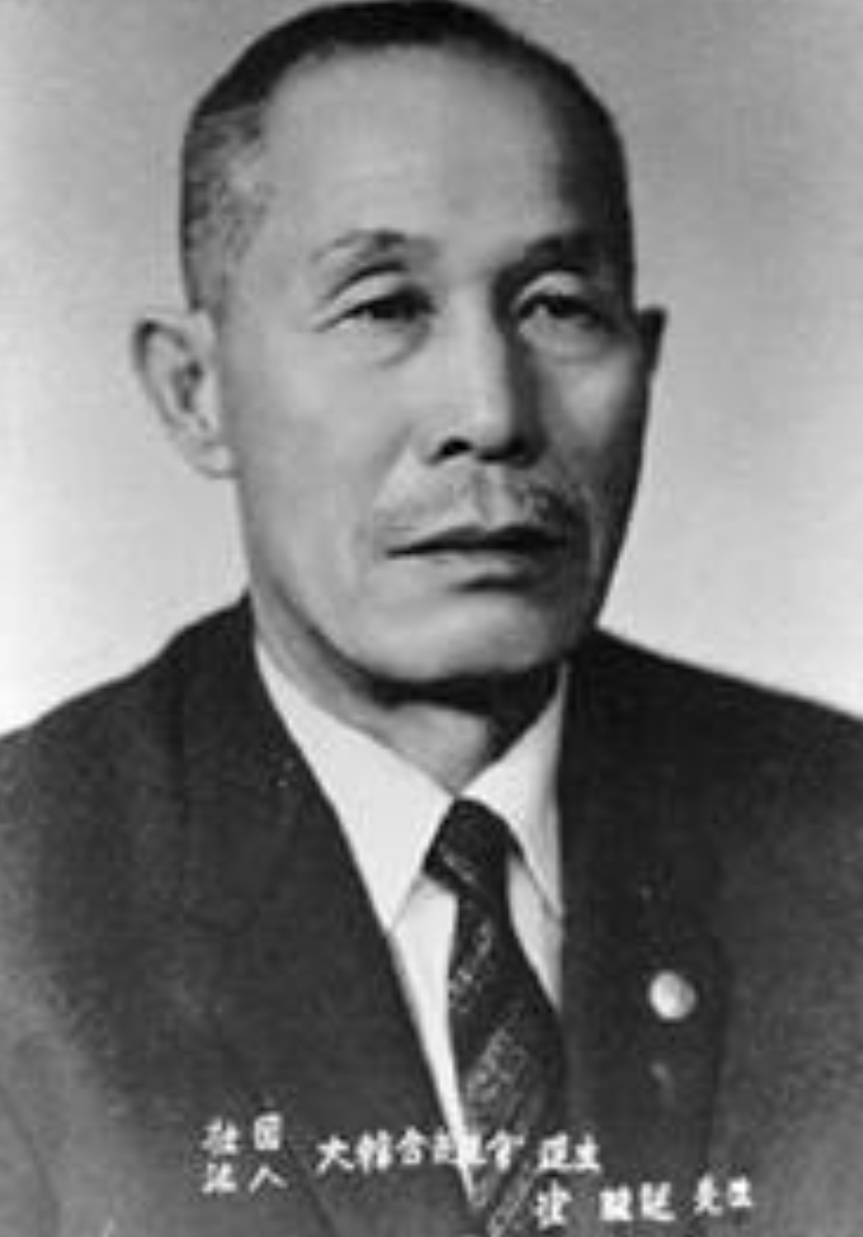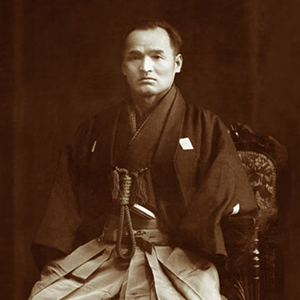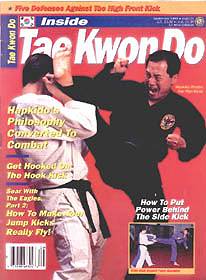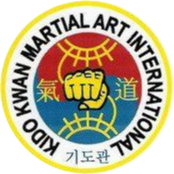The roots of Hapkido 합기도 unequivocally lie with Choi, Yong-sul 최용술 崔龍述 (09 NOV 1899 – 15 JUNE 1984). He was born in Hwan Gan, Yeongdong County a county in North Chungcheong Province, what is now the Republic of Korea (South Korea) at the very beginning of Japans physical and administrative rule over Korea. (Interesting enough, the founder of the Chung Do Kwan 청도관 靑濤館 Lee, Won-kuk 이원국 was from the same area but a few years younger!)

He lost both parents by an early age and as an orphan was sent to Japan with a Japanese merchant (it was said a confectionary) around 1909 but he was unruly and was soon sent or ran away and after being picked up by local police Yahata City 八幡市 now Kitakyushu 北九州市 with is geographically very near Korea being on the island of Kyushu, (Yahata was a major military target during WWII because of its industry and where 75 B-29 bombers first targeted the Japanese homeland in June 1944.) The police turned Choi over to a Buddhist Temple. The temple monk is said who gave Choi his Japanese name of Yoshida, Asao 吉田麻夫. It didn’t take long for the unruly Choi (Yoshida) to rebel against the strict rules of monastery life, but did show an aptitude for physical training/marital arts practice. Around 1909-1910 Choi (Yoshida) was sent to study under Takeda, Sokaku 武田 惣角 (October 10, 1859 – April 25, 1943) the founder of Daito-Ryu Aiki Jujutsu. The head monk was named Yamamoto, Hidero and he and Takeda grew up together learning the martial arts but Yamoto became a monk and Takeda became a roaming martial arts teacher. It was on this monks personal recommendation to his childhood friend to accept Choi/Yoshida.

From 1912 to 1922 Choi/Yoshida served as Takeda’s assistant so studied the aspects directly or indirectly nearly daily. Choi/Yoshida remembered training was hard. For a couple years there is some modest information as to where Takeda Sensei traveled, but by 1910 or so, we know Takeda Sensei had travelled from Kyushu to Hokkaido which was Japans “last frontier” and sparsely populated. It was during this time that Takeda Sensei came into contact with Ueshiba, Morihei 植芝 盛平, (December 14, 1883 – April 26, 1969) who would later found the martial art of Aikido 合気道. (Aikido and Hapkido written in Hanja/Kanji are written identically.)
We know much about Takeda’s training in Hokkaido mostly because of Ueshiba Sensei’s writings, and those of Aikido historians especially from Stanley A. Pranin (24 July 1945, – 7 March 2017) who was a Yoshinkan and Aikikai Aikido black belt who was the founding publisher, and editor-in-chief of Aikido Journal (formerly Aiki News). Since Aikido’s roots are Daito-ryu Jujutsu he published many articles and several books on the subject. Of course a great first-hand source is actually Takeda Sensei’s actual ledgers, and payment and certificate books that he kept.

While there is some skepticism about rather Choi/Yoshida actually learned Daito-Ryu from Takeda Sensei, as there are conflicting stories. There is enough circumstantial information and documentation that it does support that Choi/Yoshida did learn Daito-Ryu. In an interview with Ueshiba Kisshomaru 植芝 吉祥丸 the son of the founder of Aikido by Shin, Sang-duk in 1997. The following is an excerpt from that interview!
SHIN: “Did you hear about Yoshida Asao Sensei?”
UESHIBA: “Yes from my father, that he was a young Korean man that trained very hard while in Hokkaido.”
And then in a earlier interview with Ueshiba Kisshomaru by Stanley Pranin from the Summer 1991 issue of Aiki News was the following.
PRANIN: “The founder of Hapkido in Korea, Choi, Yong-sul did he learn Aikido or Daito-ryu Jujutsu?”
UESHIBA: “I do not know much about Choi, Yong-sul’s martial art, but I know that when Takeda Sokaku Sensei had a seminar in Asahikawa City, Hokkaido, a seventeen or eighteen year old Korean boy participated. He and my father learned Daito-ryu together. My father considered him to be his senior.”
Since Ueshiba Kisshomaru says his father knew of a Korean boy about 17/18 years old this would mean it was around the year 1917/1918 and we know based off of Choi/Yoshida’s statements and Ueshiba Morihei’s they were both in Hokkaido during this time period. And since Ueshiba considered Choi/Yoshida his senior, it does support that Choi’/Yoshida had already been practicing Daito-Ryu for some time prior to Ueshiba’s arrival! There is a few years that may be off a bit as we know Ueshiba had first met Takeda Sensei in 1915 so we can assume that when the 1990s came about we would except some minor time lapse issues.
While Choi (Yoshida’s) time in Japan is nearly impossible to accurately prove, it’s clear that he was proficient in some form of Jujutsu. And without actual training records, or other witnesses, it is hard to prove one way or the other.

We know based of Daito-ryu records that Takeda Sensei had opened a small dojo 道場 (Korean term is Dojang 도장) in Tokyo near the royal palace in Mid-1922. There he taught government officials and members of the Royal Household. Choi (Yoshida) is said to have been doing most of the teaching and accordingly would teach seminars in Takeda’s stead as well. And since the issue with lack of records could be contributed to the Great Kanto earthquake 関東大地震 on 01 Sept. 1923.
Ethnic Koreans were massacred after the earthquake. The Home Ministry declared martial law and ordered all sectional police chiefs to make maintenance of order and security a top priority. A false rumor was spread that Koreans were taking advantage of the disaster, committing arson and robbery, and were in possession of bombs. Anti-Korean sentiment was heightened by fear of the Korean independence movement (Which had been growing since it started March 1, 1910!) In the confusion after the quake, mass murder of Koreans by mobs occurred in urban Tokyo and Yokohama, fueled by rumors of rebellion and sabotage.
The government reported that 231 Koreans were killed by mobs in Tokyo and Yokohama in the first week of September Independent reports said the number of dead was far higher, ranging from 6,000 to 10,000. (In 2016 records where found were there indeed were over 6,000 Koreans lost.) Some newspapers reported the rumors as fact, including the allegation that Koreans were poisoning wells. The numerous fires and cloudy well water, a little-known effect of a large quake, all seemed to confirm the rumors of the panic-stricken survivors who were living amidst the rubble. Vigilante groups set up roadblocks in cities, and tested residents with a shibboleth for supposedly Korean-accented Japanese: deporting, beating, or killing those who failed. Army and police personnel colluded in the vigilante killings in some areas. Of the 3,000 Koreans taken into custody at the Army Cavalry Regiment base in Narashino, Chiba Prefecture, 10% were killed at the base, or after being released into nearby villages. Moreover, anyone mistakenly identified as Korean, such as Chinese, Ryukyuans, and Japanese speakers of some regional dialects, suffered the same fate. About 700 Chinese, mostly from Wenzhou, were murdered.
About two months after the earthquake Choi (Yoshida) was returning from the Dojo and as he was crossing a bridge on his way home, he noticed members of the Japanese Civil Defense where harassing three Korean women. After yelling and thus engaging in a fight with them, he was able to disarm and knock them down or out of the fight, but he was injured in the exchange by being stabbed with a bamboo spear. He used a tanbo 短棒 (Korean Dan Bong단봉) to defend himself and the women and clearly why we see the use of this weapon within many Hapkido styles. It was after this incident and witnessing the death of Koreans after the earthquake that Choi (Yoshida) stopped thinking as Japanese but Korean again.
By April 1924 Choi (Yoshida) had returned to Hokkaido where Takeda had already returned right before the Earthquake. Takeda was living in Shirataki a village in the far north of Hokkaido. It was during her time in Hokkaido that he came across some Korean communities (migrant workers Coal and Timber industry) who also due to the remoteness were able to also have wives and children in the labor communities. This is when Choi (Yoshida) would really identify being Korean. The community he became involved in was located Oataru Hokkaido which was southwest of Shirataki closer to Sapporo and so he moved away from Takeda and by 1929 he had married a ethnic Korean who was from Gyeongsang District of Korea (South Korea today), and by 1931 he was a father to a daughter born in Hokkaido.
With the end of World War II on 02 September 1945, many Korean’s were repatriated with many choosing to remain becoming Zainichi 在日韓国. The most famous Zainichi martial artist is undoubtedly Choi, Young-eui 최영의 崔永宜 who became world renowned as Masutatsu “Mas” Oyama 大山 倍達 becoming a full Japanese citizen in 1968. By the winter of 1945 Choi (Yoshida) had arrived back to Korea landed in Busan via the a ship. He then arrived in Taegu via train and started to sale bakery items and eventually moving into a small pig farmer. By early 1947 he had his first student because he had to defend his self while in line to obtain grains from a local brewery.

The Seo (Suh) family had a brewery in Taegu and since it used grain (rice, millet) in the process, that mash was prime feed for pigs. So Choi would stand in line most days to obtain this left over by product of distilling rice wine and while in line he got into an altercation with others. This was witnessed by chance by Seo ,Bok-sub who was the manager of this facility and already a Yudo (Judo) black belt. With a quick demonstration Choi was asked to be Seo teacher and a Dojang was established inside the brewery and Hapki Yu Kwon Sul 합기 유권술; 合氣柔拳術 was born.
By 1954 Seo had sold the brewery because the father of Seo; Seo, Dung-jin became involved in politics and being in government service they couldn’t have a private/commercial business. So Seo founded
what has become the first Hapkido Dojang (not inside another business like the one he and Choi held inside the brewery) called the Daehan Hapki Yukwonsool Dojang (대한합기유권술도장). And the first symbol of Hapkido was designed by Seo as well. That being the inverted arrowhead what would later appear in the Korea Kido Association logo and that of GM Myung’s World Hapkido Federation logos as well. It also paid homage to the logo of the Daito-ryu as well.
By 1965 Seo had moved from Taegu to Seoul and opened up the Joong Ang Hae with Kim, Woo-taek as the head instructor while Seo pursued his academic endeavors during the day and martial arts in the evening.
Choi on the other hand remained teaching after Seo opened up his school away from the brewery at his home sometime around the end of the Korean

War. Since he was living in Taegu still he lived near the Taegu City Technical High
School where he obtained several students from. A freshman from that high school became a student and trained with Choi for the next three or four years, that being Ji, Han-jae 지한재. By 1956/57 Ji had moved back to his home town of Andong 안동시 and was trained by “Old Man Lee” and shortly after Ji opened his own school called the An Moo Kwan 안무관 and some of Ji’s first students were Yu, Yong-woo, Oh, Se-lim and Kwon, Tae-man.

With less than a year teaching at the An Moo Kwan, Ji moved to Seoul and in Seoul he opened the Sung Moo Kwan 성무관 and his first student was Hwang, Duk-kyu. Shortly after this school opened Ji opened an affiliate dojang in a clothing factory which was close to Hanyang University.
It was from here that Ji was pulling young men for this new dojang location. It was during this time that Ji had a run in with a local gangster and former ROK Navy member which Ji used an elbow lock on when he was challenged by this gang member. After this incident Ji gained much notoriety and gained a couple dozen new members to the school. Also during this time period is when we see more kicks are added, while Choi and what he learned had just a few kicks, it was Ji and his early students who really added the kicks to Hapkido, the low spinning, and jumping kicks became the specialty of the Sung Moo Kwan students.
At this school many of Ji’s most famous students such as Myung, Kwang-sik; Lee, Tae-joon; Kim, Yong-jin; and more. And with more students, Ji was able to upgrade his Sung Moo Kwan to inside a boxing gym of Ko, Bong-ah. Here he rented a room from Ko and this was the first time he had modern training equipment such as mats. Since about 1956/57 Ji was no longer training directly Choi but did have Choi come to Seoul for testing and demonstrations. By 1961 Ji had gotten some government connections and his most notable student by this time was Han, Bong-soo.

By 1965 the Korea Hapkido Federation was founded with Ji as the Executive Director/Head instructor and Choi as President. Which has had many changes and is today the largest Hapkido association today. Currently the President of the KHF is GM Oh, Se-lim. GM Oh was elected as President in 1980 and the organization has grown under his direction.
![]()

Average Rating